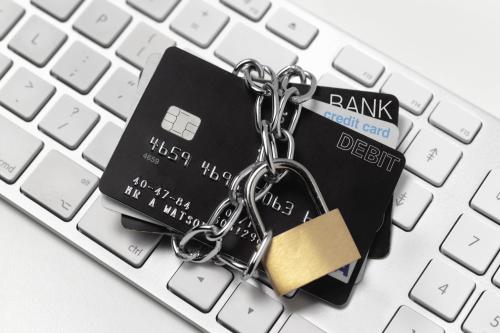Basic Steps to Take in the Event of Identity Theft
If you fall victim to identity theft, be sure to take the following steps right away, no matter the specifics of the crime:

- Visit identitytheft.gov to select your identity theft scenario and develop a recovery plan. This process will also generate an identity theft report for the Federal Trade Commission (FTC).
- Contact the three major credit bureaus (Equifax, Experian, and TransUnion) to put an initial or extended free fraud alert on your credit file to make it harder for identity thieves to open accounts in your name. It also requires businesses to verify your identity before issuing credit.
- Place a free credit freeze to prevent anyone from opening a new line of credit in your name. A credit freeze will not affect your credit score.
- Order a free credit report from Annual Credit Report or call 877.322.8228. Your credit report is a summary of your credit history. It lists your name, address, social security number, credit cards, loans, how much money you owe, and information on whether you pay your bills on time or late.
- One way to protect your personal information is to learn what information is in your credit report. Take
a look at the Inquiries section—that’s where you’ll see who else checked your credit, and it can be an
early warning sign of a problem.
- When you get the report, make sure all the information is about you. If you don’t recognize something,
it could mean someone stole your identity. You’ll need to contact any of your accounts that may be
affected by identity theft.
- One way to protect your personal information is to learn what information is in your credit report. Take
- Employ identity theft protection services, which offer valuable tools to help protect your identity, such as real-time credit monitoring, customized account alerts, and 24/7 live support. They generally have a subscription fee.
- Think about where this information could have possibly leaked from and secure it. Frequently, these types of incidents trace back to a weak password on an online account that you may not have updated in a while. Next, ensure that all your accounts have unique, strong passwords, and update them frequently. A strong password includes eight or more characters, as well as a mixture of uppercase and lowercase letters, numbers, and symbols.
- If your email account was hacked, review the mail forwarding rules in your account and delete any that you don’t recognize. Attackers often add these rules so that when your account sends or receives certain emails, those emails are forwarded to the attacker, even after you’ve regained access and changed your password.
- Ensure that multifactor authentication is enabled on your important online accounts, where applicable. This safeguard reduces the risk of an attacker compromising your account by requiring more than one form of identification, such as something the user should know (e.g., password, PIN) combined with something the user has (e.g., a smartphone, a hardware token).
- Keep a close eye on your online financial accounts. Report any suspicious charges to your financial institutions immediately.
- Contact any financial institutions with which you hold accounts and let them know about the theft. They will inform you of any additional security procedures or safeguards to help you secure your accounts and information from future fraud.
- File a police report with your local jurisdiction. While your city or county may not be able to investigate this crime, having a police report can be an essential document to help you to recover from identity theft.
- Consider identity theft insurance to help you recover from the costs related to identity theft. For example, you can be reimbursed (up to your policy limit) for expenses you had in order to restore your identity. Keep in mind, identity theft insurance typically only covers the expenses that happen after the identity theft occurs (like legal fees, lost wages, and application fees). It won’t cover direct financial losses you incurred as a result of the identity theft, like fraudulent charges on your credit card statement.
- Visit the FTC’s website for more information and resources about identity theft. This site has some great tips to help you secure your personal information.


